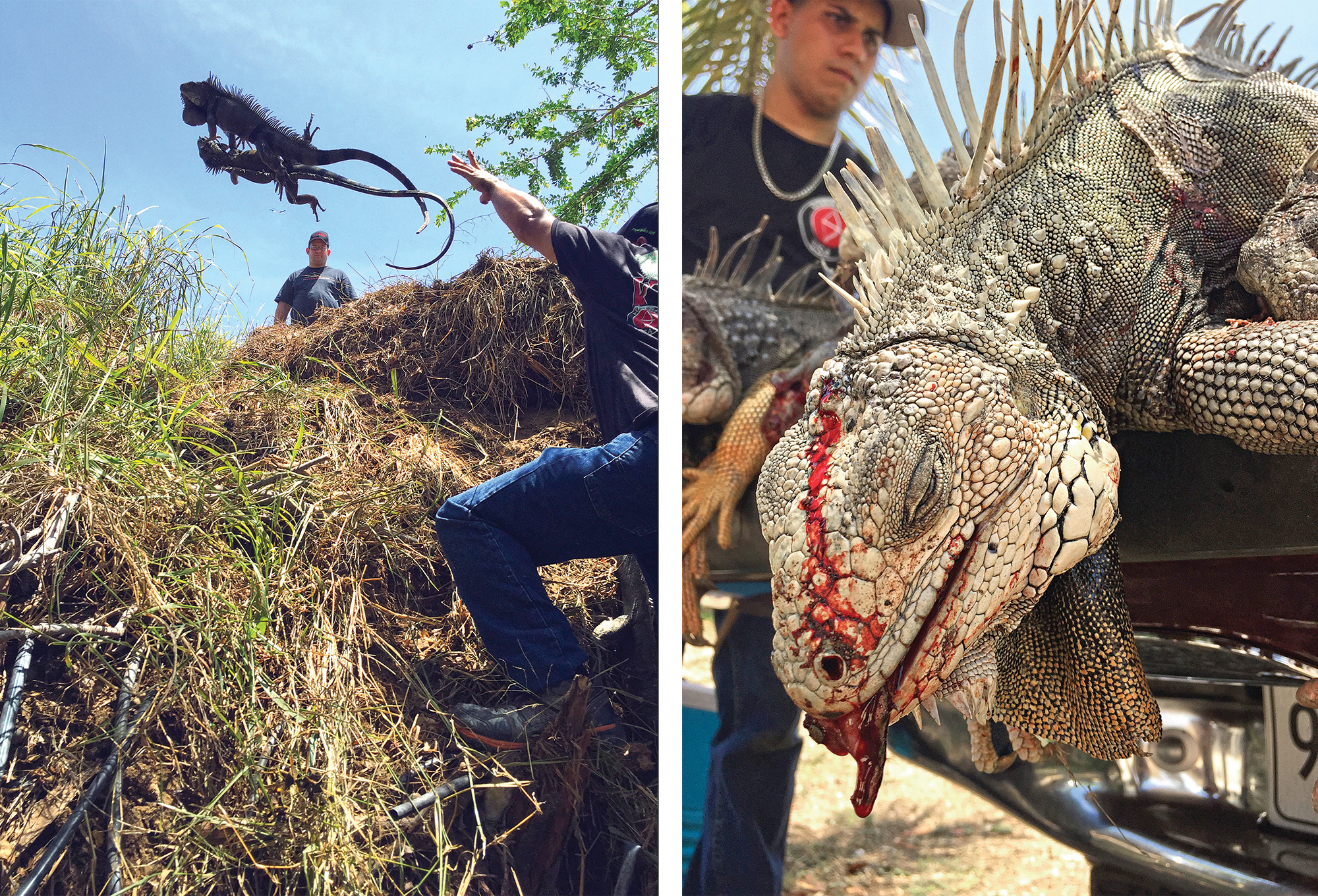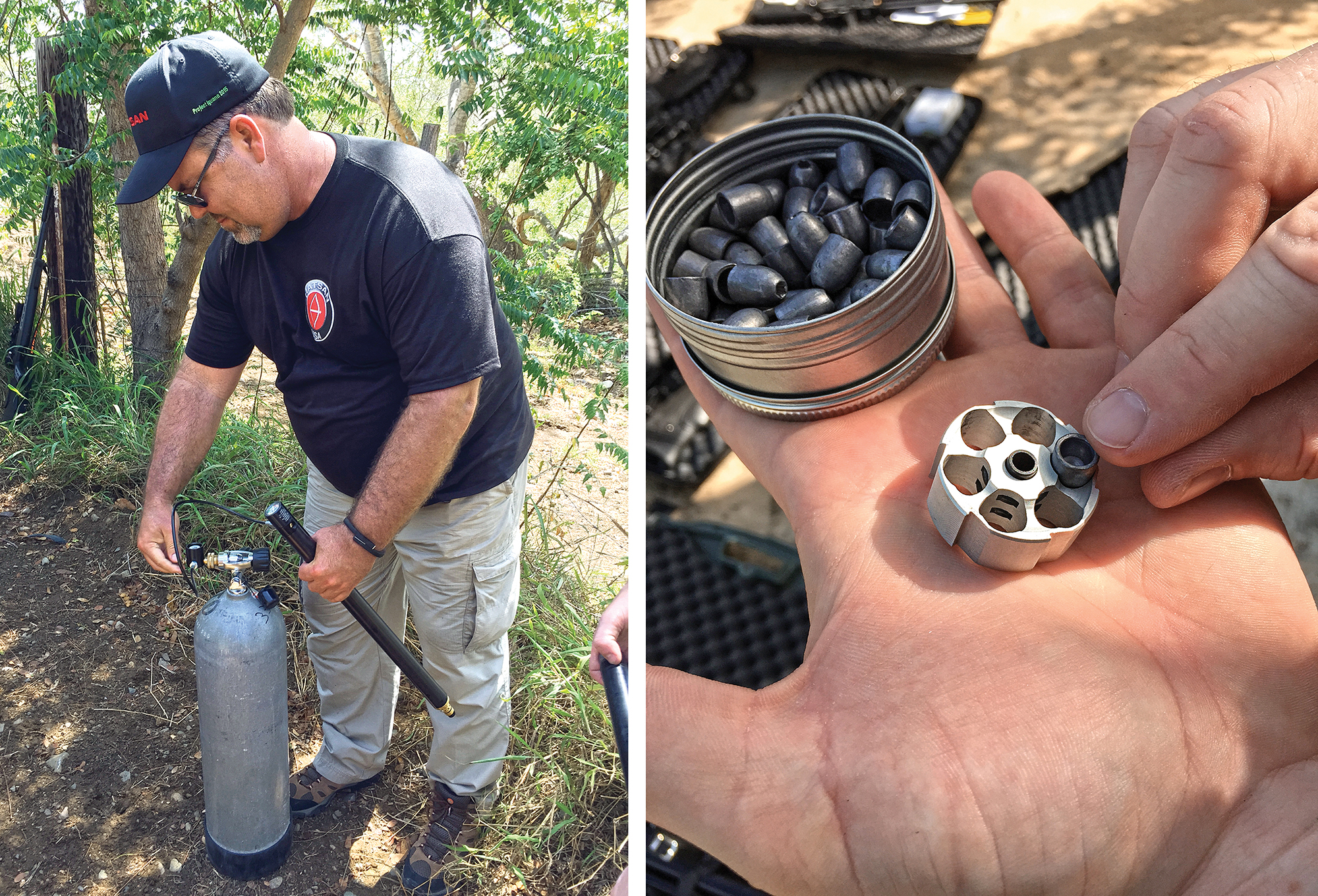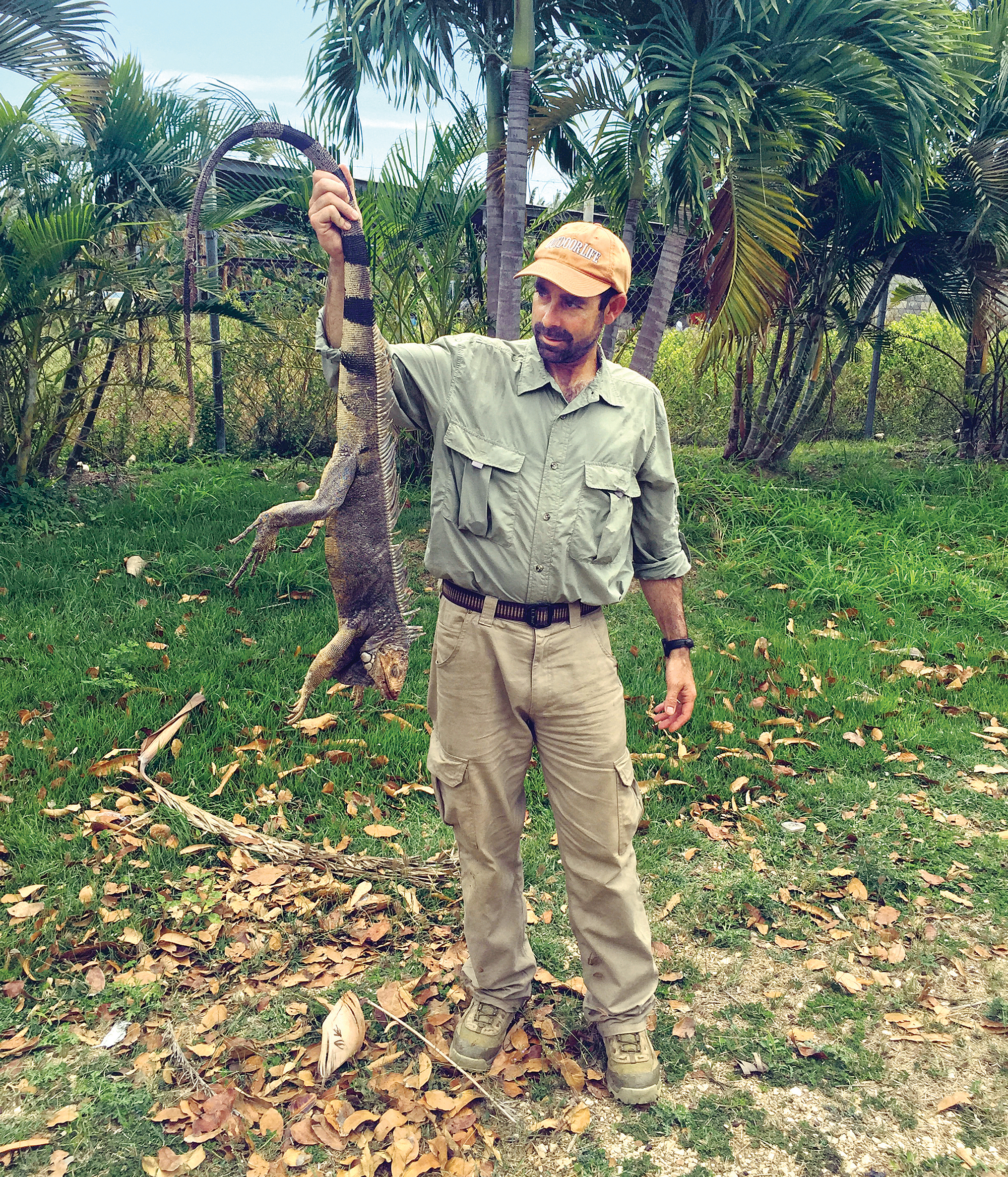SOMEWHERE there could also be smart, humorous, charitable iguanas, and a few of it’s possible you’ll hold them as pets. But squinting up right into a mangrove tree in southern Puerto Rico, attempting to resolve a red-eyed, hissing wild iguana within the confusion of slender inexperienced leaves, it’s onerous to think about these lizards as something however back-alley larcenists. Lunch-money bullies. Grifters.
Maybe it’s the air rifle in my hand that locations me in such stark opposition to those iguanas, however I admit it: It’s deeply satisfying to shoot these invasive opportunists which can be shortly taking up the island. There can be a sensory reward. Thwap spits the gun. Thwunk broadcasts the assembly of hollowpoint pellet and leather-based. If it’s an excellent shot, the sound of a 10-pound lizard free-falling via the limbs and smacking on the bottom. Crash! Thud!

I’m right here, not far inland from the port metropolis of Ponce, to assist cut back the infestation of non-native iguanas which can be inflicting many hundreds of thousands of {dollars} in harm to fruit orchards, crop fields, and even highways and different infrastructure. Because Puerto Rican firearms legal guidelines are both restrictive (minority opinion) or complicated (majority opinion), my group has opted to hunt the reptiles with air rifles—new .35-caliber Carnivores from the Turkish firm Hatsan. For the primary day, we do fairly properly. Between 5 shooters, we drop perhaps 40 iguanas from the treetops.
The Romans are a part of a free confederation of Puerto Rican damage-control volunteers who get invites from massive landowners to kill as many iguanas as they will. Some of those reptile-ridders are self-styled rogues who name themselves “Los Iguaneros” and have made desperado-themed movies you could see on YouTube. The Romans are slightly extra restrained with their self-promotion. But they’re deadeye killers, all the identical. In my first day looking with the household, we dispatch almost 100 lizards.
An Island-Wide Pest
Puerto Rico’s iguana drawback began, in all chance, with a couple of pets launched into the wild. Those outcasts met and bred, and shortly their progeny, feral and ravenous, began shifting across the island, following the shoreline at first, however about 10 years in the past, they began shifting inland. Initially, iguanas had been thought of a novelty. But in only a few years, populations went from scattered to dense, and from nuisance to environmental disaster. There isn’t any a part of the island the place you received’t discover the invaders gauchly lounging in bushes, however they’re notably troublesome within the countryside, the place they eat or harm as a lot as 1 / 4 of the crops. And in a United States territory that’s teetering getting ready to financial collapse, any discount of its export enterprise is taken severely. The favourite meals of iguanas are banana, papaya, and melon.

Because of their behavior of burrowing deep underground to make nests—every feminine lays round 70 eggs twice a 12 months—iguanas have additionally been blamed for freeway collapses and sidewalks that crack and hunch. Even the primary worldwide airport in San Juan has been affected by the lizards. Iguanas like to bask on sizzling surfaces, and it’s not unusual for the airport’s runways to shut on summer season afternoons to allow them to be cleared of lizards, which may flatten tires and even be sucked into the generators of jet engines.
Experts estimate Puerto Rico’s iguana inhabitants to be between 10 million and 14 million, however as a result of the reptiles don’t have any pure predators right here and due to all of the meals they will discover and eat, the inhabitants is anticipated to double yearly or two. And that’s the place the Romans are available.
Air Strikes
Alex Echevarria Roman is 23 years previous and formally well mannered. But he has eyes like a falcon and has most likely collected extra kilos of untamed meat with an air rifle than anybody I’ll ever know. For the final 10 years, he has roamed Puerto Rico together with his household, attempting to kill each iguana they see. As we talked, we walked via a stand of bushes on the sting of a big mango plantation, and each jiffy, Roman would cease, level up, direct my purpose (“Shoot for the spot just behind the eye”), and watch for me to drop an iguana earlier than persevering with.
“We distribute our phone numbers around the countryside and tell people, mostly big-scale farmers, to call us when iguanas get out of control,” he tells me as I settle my crosshairs on an avocado-green 5-footer. “At first, we’d get a few calls a month, but now, we can’t keep up. We come to a farm like this one [outside Ponce], but it’s not possible to control them. We can kill 100 iguanas in a spot, and return a day or two later and kill 100 more.”

I hit the lizard slightly too far again. This is a foul factor, as a result of until you hit a cold-blooded iguana simply behind the attention, it received’t die immediately. Instead, it could scurry across the trunk and out of sight, or it could grasp up in a crotch. Or, like this one, it could drop out of the tree, able to combat. To see a wounded iguana on the bottom is to see a Japanese Godzilla flick come to life. The lizards hiss, they flare their frills, and so they usually cost their persecutors, attempting to whip them with their saw-sharp tail. They remind me of the sneaky, venomous dilophosauridae from Jurassic Park, and I don’t thoughts telling you they freak me out slightly bit.
“We mainly use air rifles,” Roman continues after I dispatch the wounded lizard and regain my composure. “Partially because they’re much cheaper to shoot [than firearms], but also because in Puerto Rico you can only use firearms during fall hunting season for pigeon. But it’s legal year-round to hunt iguanas with air rifles. My favorite time is February, during the breeding season. Then, the machos can get very aggressive.”
Roman prefers .22-caliber air rifles for his or her flat trajectory and accuracy. I’m capturing a hard-hitting .35-caliber pellet out of my Hatsan PCP (pre-charged pneumatic), and after about 20 pictures, I’ve to swap out air reservoirs that we crammed earlier within the day from an enormous scuba tank behind Alex’s pickup. The Hatsan shoots 82-grain pellets that look virtually precisely like bullets from a .380 semi-auto. Even imperfect pictures hit so onerous they typically knock the lizard out of the bushes. Thwap. Thwunk. Crash. Thud.
“To see a wounded iguana on the ground is to see a Japanese Godzilla flick come to life. The lizards hiss, they flare their frills, and they often charge their persecutors, trying to whip them with their saw-sharp tail.”
After a few hours of Roman’s steering, I get fairly good at seeing and hitting the cryptically coloured iguanas. I really feel as if we’re looking unwholesome squirrels as we transfer quietly via the bushes, like we’re looking unwholesome squirrels. And similar to with squirrels, the pictures get tougher as we go. These reptiles are keenly conscious that people imply hazard. Once we kill a couple of, the remaining both climb excessive into the foliage or morph into the bark—just like the chameleons they’re associated to, they will change colours to match their environment, so usually the one strategy to spot one is to spy their lengthy striped tails—or they drop out of the bushes right into a shallow creek and swim away. The greatest iguana I kill is almost 6 ft lengthy and about 10 kilos; the typical measures 4 ft from scaly nostril to whippy tail.
The largest iguana Alex has killed was a feminine that weighed 18 kilos and stretched over 7 ft.
Chicken of the Trees
By the top of the day, now we have collected dozens of iguanas, and have tried to maintain them out of the searing Puerto Rican warmth till we are able to clear them. They will probably be tonight’s dinner. Their scaly thighs elicit competing responses. These are repulsive reptiles that generally carry salmonella. But you’re employed up an urge for food gunning dinosaurs all day.
So we clear a couple of dozen of the meatiest specimens and take them again to the farmhouse that we use as a gathering place. There’s an outside grill with red-hot coals. While somebody prepares arroz con gandules (rice with peas), the iguana tails and thighs sizzle and pop.

The style is, predictably, like rooster. But much more precisely, it’s like a tricky, dry scallop. The texture lends itself to being slow-cooked in a sauce, like a cacciatore. Between mouthfuls, I ask my hosts if iguana is usually eaten right here. When they snort uncomfortably, Alex explains that whereas iguana is taken into account a delicacy in different components of Latin America, the place the reptiles are indigenous, Puerto Ricans by no means acquired a style for them. Like me, they are usually repulsed by the lizards.
That’s a part of the issue with controlling iguana numbers right here. There’s no marketplace for their meat, and so little incentive to hunt them.
It happens to me that as a lot as I need to vilify the iguanas, they’re doing what each different organism does—they’re making a dwelling nevertheless they will. And it’s an excellent dwelling, with nothing to cease their regular growth besides the bodily limitations of the island. And a couple of thousand extra airgun-equipped hunters.
As we depart the farm, I see the one naturally killed iguana of my week on Puerto Rico. Its decomposing physique is caught in a hurricane fence round a demolition website, too fats to suit via the hyperlinks.
Read extra OL+ tales.



